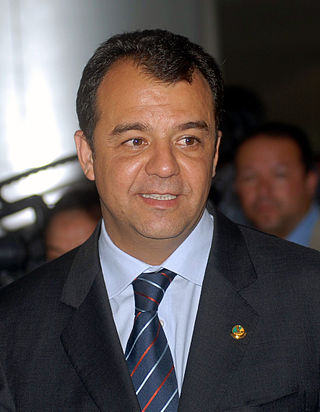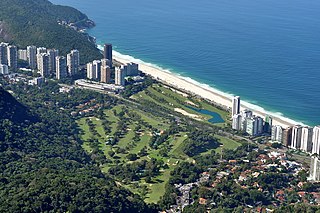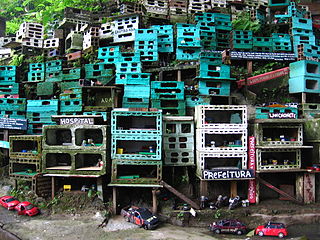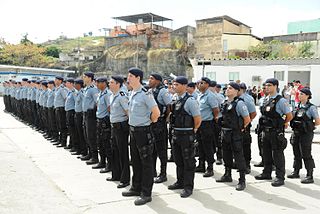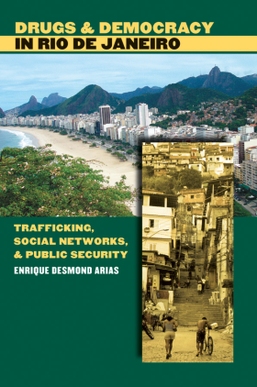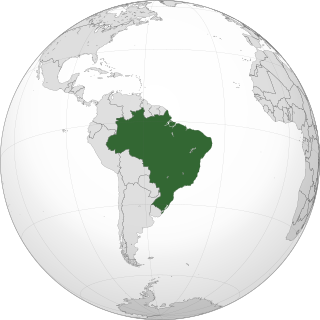Projects
Phase I, 2000–2008
Two of the CatComm's early initiatives were the Community Solutions Database (CSD) and Casa do Gestor Catalisador. The CSD, the internet's first open-access database of detailed community solutions. [14] Available in Portuguese, English and Spanish, the database was designed to allow community activists and organizers to share ideas, disseminate information, and document best practices. [15] The initiative had received international recognition for its network of 6,000+ members and its impact on local communities in Brazil. [16] [17] Over 250 solutions in 21 countries have been documented in the CSD. [18] While much of this early work was not concerned with direct political action, it effectively brought social projects into the conversation of how to improve local communities using the technology available at the time. [19]
Along with its CSD network, CatComm also initially ran a community center in Rio de Janeiro known as Casa do Gestor Catalisador (Casa Community Technology Hub). [20] From 2003 to 2008, the Hub offered a physical meeting place for community leaders to discuss and plan new projects. Based in Rio's central historic port area, the Casa attracted over 1,000 local leaders and 400 external professionals (journalists, activists, professors, students) from 22 nations to engage in new projects. [21] In 2006, it won the Tech Award from the Silicon Valley Tech Museum. [22] That same year, the United Nations Habitat recognized the Casa as one of the 70 "Actionable Ideas" of urban sustainability. [23] With its goals being accomplished through the evolution of technology and digital platforms, both the CSD and Casa were terminated in 2008. [24]
Phase II, 2008–2016

In 2008, CatComm further expanded operations with online publishing and social media engagement. This took the form of RioOnWatch, a local news site based on the group's 1,200 community leaders and 200 favelas. [25] During the 2016 Summer Olympics, CatComm and RioOnWatch were particularly active in working to prevent forced evictions and protection local neighborhoods. The municipal government of Rio de Janeiro pushed for the removal of local neighborhoods to create wealthier ones, such as in the favelas of Indiana, Babilônia, Vidigal, Vila União de Curicica, Metrô-Mangueira, and Horto. [26] In response, CatComm conducted workshops, produced educational material, and sought to protect the 1.4 million people in Rio de Janeiro's favelas. [27] There were also numerous educational programming campaigns on Facebook, Twitter, YouTube, WordPress, and Blogger that brought international attention to the cause. [28]
A pivotal moment in CatComm's history was the Summer Olympics in 2016. It recognized that Olympic organizers consistently pushed the notion that the Olympic Games were good for cities and countries, and evidence suggested that mainstream media outlets tended to disseminate a similar message. [29] They denounced the translation of Rio's favela neighborhoods as "slums" or "ghettos" which painted an inaccurate picture of the working-class neighborhoods. In turn, international press organizations highlighted the gap between the government's rhetoric and the more complicated reality of Rio through the work of CatComm. [30] CatComm thus promoted the image of favelas as culturally rich and economically vibrant communities that maintained historic architecture in the face of increased gentrification. Subsequent articles published in Time , The New York Times , NBC , and BBC on Rio's favelas turned to Williamson and CatComm for localized knowledge. [31] [32]
After the Olympics in 2016, RioOnWatch shifted its focus to influencing public policy. It has since aimed to inform international development organizations, publish columns specific to Brazil's favela communities, highlight successful organization strategies, popularize innovative urban planning concepts, and documenting the legacy of the Olympics on favelas. It released two films, Favelas as a Sustainable Model and Weaving the Sustainable Favela Network to document the spark global dialogue on the topic and were met with international acclaim. [33] The former was the recipient of the Best Mid-Length Film Award at the Cine Periferia Pai D’égua Film Festival in Belém. [34] According to its more recent annual report in 2019, RioOnWatch had an increased readership of 50% with over 3,2000 articles published and 350,000 people reached per month. [35] Moreso, RioOnWatch itself was award the Webbys Honoree in the “Best Communities” category in 2016. [36]
Phase III, 2016–2024
In 2017, CatComm launched the Sustainable Favela Network (SFN) which focused on sustainable initiatives in local communities. The organization mainly works with favelas to tackle environmental issues, including waste management, community gardens, environmental preservation, and sustainable technology. [37] A survey by the SFN found that 85% of the favela organizations wanted to install solar panels and transition to other sustainable technologies. [38] SFN was also a major attempt to promote international dialogue on the topic of sustainability through mapping initiatives and quantitative analysis. [39] [40] Since 2018, SFN has also organized events through its annual network exchange. [41] SFN recently published a major report, with support from the Heinrich Böll Stiftung Brasil, that documented CatComm's new mapping projects. [42]

Most recently, CatComm began the Favela Community Land Trusts (CLTs) initiative. The grassroots-based model aims to support individual ownership of houses through collective ownership of land. This new model aims to protect against evictions and gentrification through tenure security. [43] While the CLT-based model has existed for decades, CatComm's favela-focused CLT formalizes the process of home ownership. Studies have shown CLTs are effective in reducing speculation and displacement of marginalized communities in Latin America. [44] Further attempts to bring the CLT to other at-risk communities around the world, such as Caño Martín Peña communities in Puerto Rico, have recently begun. [45] The report compiled evidence to show the desires of favela communities to undertake new social and environmental projects. These neighborhoods would then be given a sense of "control" as they were integrated into the formal city. [46] Since its founding, SFN has made a tangible impact on the Rio de Janeiro, with 54% of its organizations women-led and over 150 initiatives planned. [47] As of today, the CLT working group has over 150 members in 67 institutions who regularly participated in community workshops and legislative proposals. [48]
Currently in its third phase of organizational development, CatComm's present mission is supporting sustainable and asset-based community development (ABCD) in Rio's favelas. [49] This cycle has been particularly supported by RioOnWatch's new Community Journalists' Network and the growth of the Favela CLTs. In Phase IV (2024–2030), according to its website, it will seek to expand its model of urban integration and social equity on a global scale. [49]






